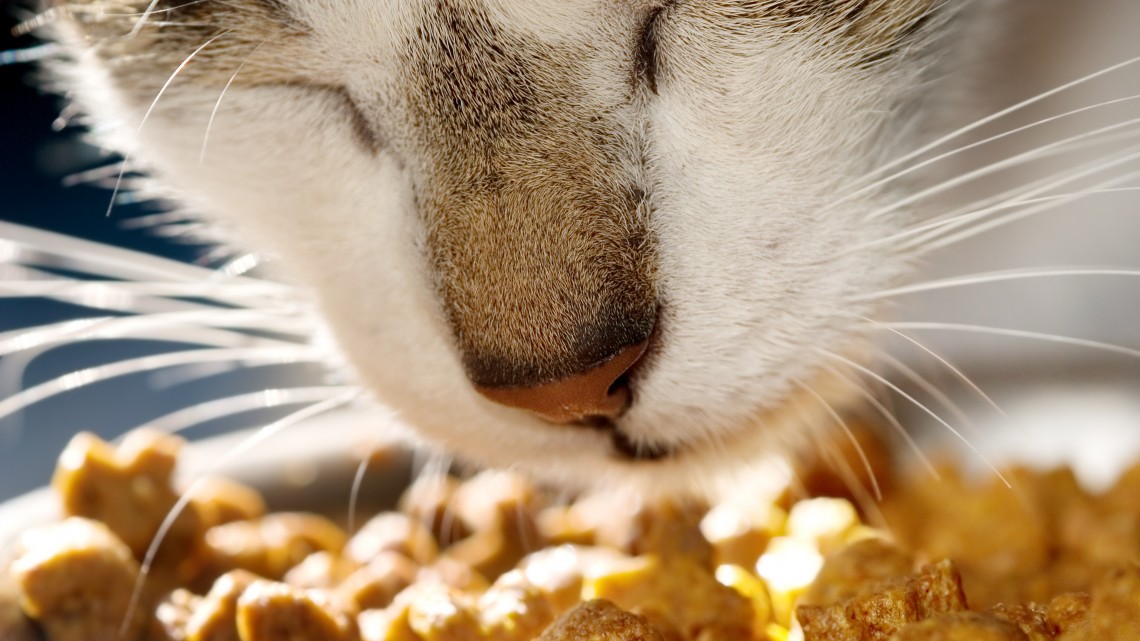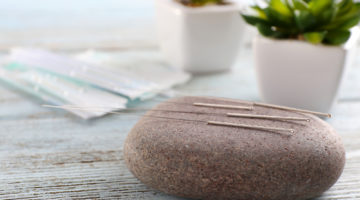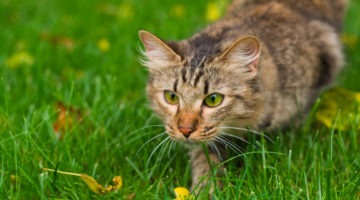A lot of people leave food out for their cats 24/7. The fact is, it’s neither necessary nor healthy.
Cats aren’t cows. It’s an obvious observation, yet many caregivers free feed their cats as if they were grazing animals, pouring dry food into a bowl and letting them eat whenever they want. Dry kibble may be the ultimate in convenience, but is it healthy for a cat to have constant access to food?
Physiologically, the cat on your lap is almost identical to the African wild cat. An African wild cat has to hunt for his food and does not know when or where his next meal is coming from.
“Cats, being true carnivores, actually prefer a 28-hour eating cycle,” says veterinarian Richard H. Pitcairn. Cats are designed to eat a single meal, then not eat again for many hours. This allows for proper digestion and the elimination of toxins associated with a meat-based diet.
I believe 28 hours between meals is a bit excessive. Large wild cats, like lions, gorge themselves on large game. My adult cats eat two, sometimes three meals a day. Kittens, pregnant or lactating cats, very old cats, or those with certain health conditions should eat more frequently.
If you want to let your cat graze, grow him a pot of kitty grass to munch on. Most cats love fresh grass. It’s also very healthy for them.
Additional disadvantages
1Free feeding can make your cat finicky. If you had the same food left in front of you all day, would you remain interested in it? Smelling food all day can actually decrease a cat’s appetite.
2I have also observed that cats do not remain in good condition when offered food on an always- available basis. Either they become overweight or too thin.
3Giving your cat continuous access to food means his stomach never gets the chance to completely empty. It keeps his digestive system constantly working, which requires considerable energy and pulls valuable resources from other body systems.
4Free feeding can result in a tendency towards urinary tract disease and other chronic illnesses, especially if the food is low in quality.
5If you have several cats eating from a community food bowl, chances are you won’t find out if one cat is off his food until there is a noticeable loss of weight. This could take weeks. If you feed your cat on a meal plan, you’ll know immediately if he’s not eating well and can address the problem at once.
Stick to a schedule
Offer food two or three times a day and allow free access for 30 minutes or so. After the half hour is up, remove the bowl and wash the floor if necessary. It is important to remove all traces of food. Of course, fresh water should always be available.
Don’t worry if you’re late home from work a few nights a week. Remember that a cat in the wild does not eat at regular intervals. He eats when his hunt has been successful. Your cat will be hungry when you get home, but that’s a good thing.
You may have some difficulty adapting your cat to eating on a schedule, but be persistent. If he doesn’t eat the first meal, don’t panic. He’ll be hungry and excited about the next. Ultimately, he’ll enjoy better health and be a happier, more energetic companion.







No Comment